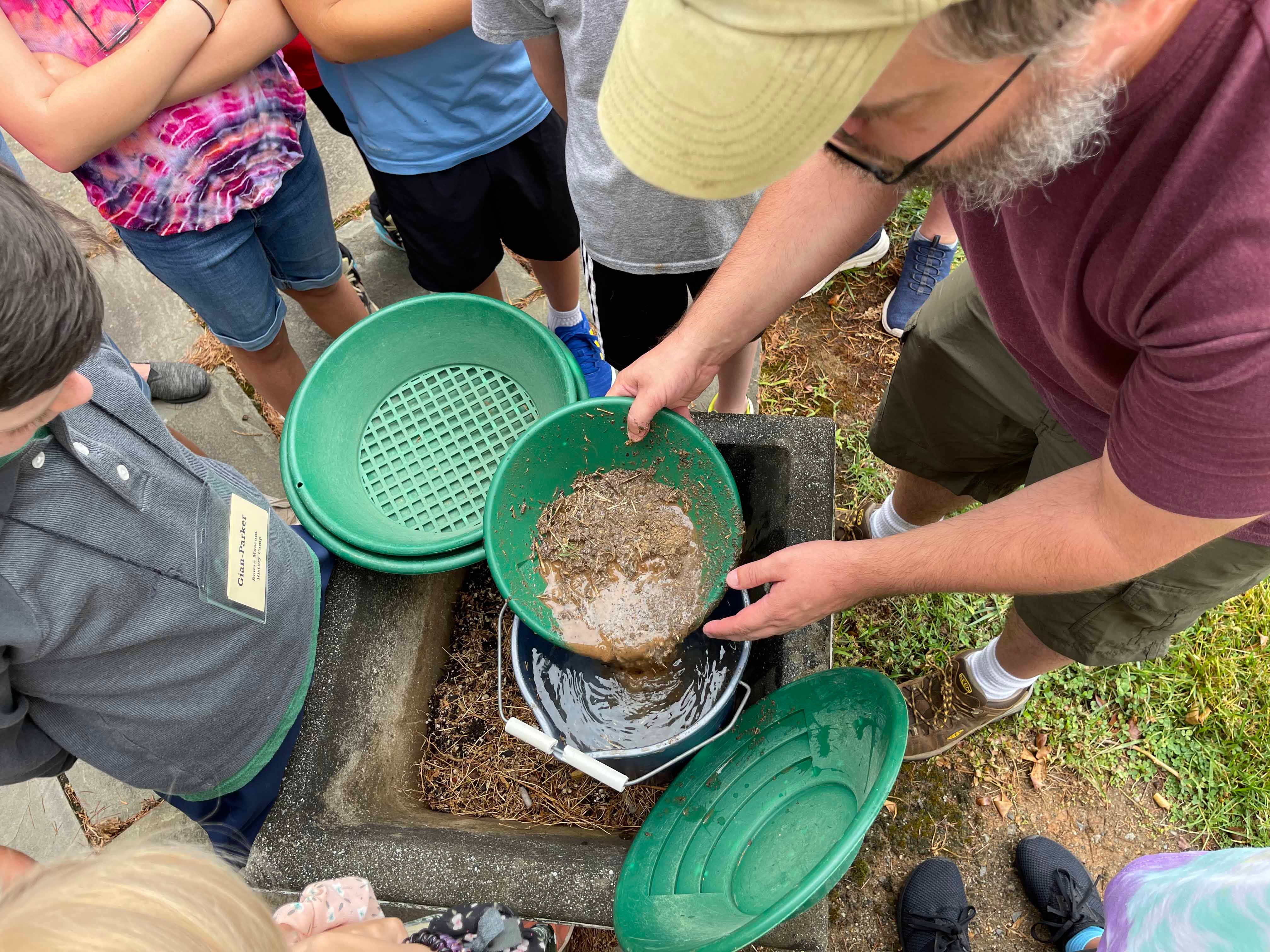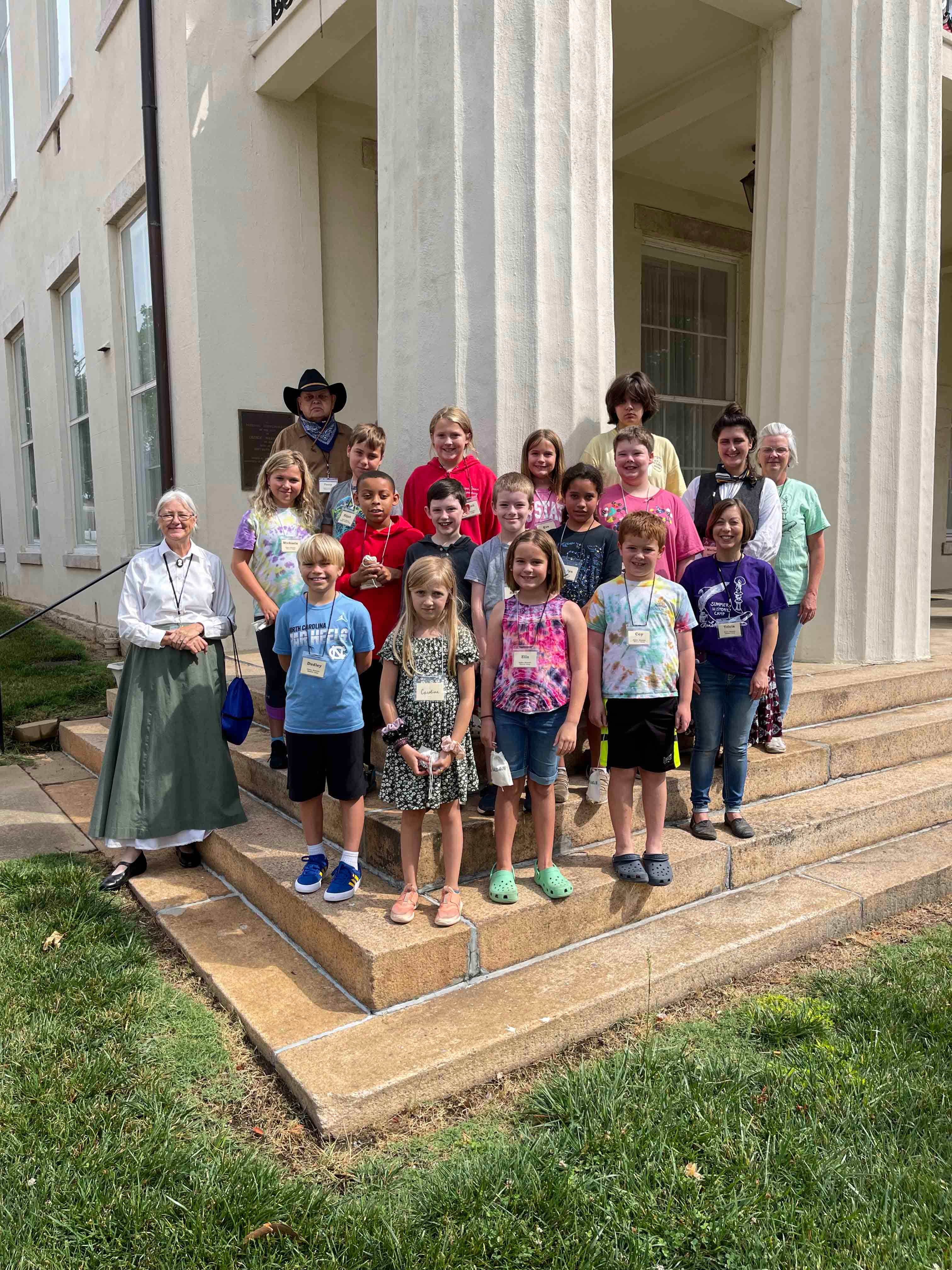Rowan Museum hosts second summer camp ‘Wagons, Railways and Reform’
Published 12:01 am Thursday, July 7, 2022
SALISBURY — Students took part in the second of a series of summer history camps, this one titled “Wagons, Railways and Reform,” at Rowan Museum.
Filing into the old courthouse, students kicked off their shoes so they could walk on National Geographic’s giant map of North Carolina.
They formed a compass rose, walked across the state and placed markers of products of the era. Cheerwine soft drinks, Stanback powders and gold nuggets from Gold Hill were connected locally.
The students also easily found the Biltmore House in Asheville and the state capitol of Raleigh. Aaron Kepley, Rowan Museum director, led the students outside for a gold panning exhibition.
Students were surprised to learn that gold mining happened locally as well as farther west.
Terry Holt, museum education chair pointed out miners putting gold in their pockets led Levi Strauss to add rivets to the pockets to improve their durability.
Education director Tricia Denton Creel led the campers through packing wagons for the Oregon Trail.
Inside the rooms were filled with labeled boxes and bags, cookware, salt, vinegar and more.
Campers worked in teams to decide what to take and what to leave behind.
Pioneers were expected to sign a constitution that they would they would be respectful and help be respectful and helpful. “Turn arounds” were people who changed their minds and went back home either because they ran out of supplies or it was just too tough.
The students were amused by “bison chips,” dried dung burned as fuel.
The campers learned that beans were essential for the wagon trip. Then they ate a bowl of mixed beans and some asked for seconds.
Educator Amy Pruitt pointed out that beans were easy to carry on the trail, very filling and high in protein for the evening meal. “The pioneers would eat a mid-day meal called nooning, which was cold food,” she said.
When the students started packing their covered wagons, one said, “Can we all agree we need to take beans?”
There was more laughter. Students got to work, adding up the weight and height of items to choose for their trip out west.
The students were paid in gold throughout the day that they placed in their bags labeled Walter’s gold. They lined up quickly for pay day.
Next up was the World’s Columbian Exposition held in Chicago in 1893. The chairs were lined up like a train car. With exposition tickets in hand, camper boarded the train car for an exciting trip.
Lunch was served with items from the fair including hot dogs with mustard, ketchup and relish. Pancakes and brownies were for dessert. Brownies were presented at the exposition by Bertha Palmer.
Students learned about other new-fangled items that made their debut at the Chicago event.
William Wrigley introduced Juicy Fruit gum. Milton Hershey brought his chocolate manufacturing equipment. And, George Washington Gale Ferris Jr., a civil engineer, introduced the Waltz Polka Ferris Wheel for 50 cents a ride.
Students made a short walk to the Utzman Chamber’s House where educator Marian Hough taught them about women’s suffrage. The right to vote for women took on new meaning when they performed a play about child labor. If women had the vote, they would favor having their children in school rather than working in mills.
One student portrayed an injured child worker while other campers read as Congressional leaders who investigated the injustices.
Back at the museum, the students took on the roles of city planners. They kept asking educator Hough where the arcade would be. It was an eye opener for them to learn what kids did for fun, or not in the late 1800s.
Churches, stores and streets were the backbone of early towns.
Pierce wrapped up the day with a presentation on Katherine Wright, sister of the famous flying brothers. Students remembered the giant map and made a connection to Kitty Hawk.






